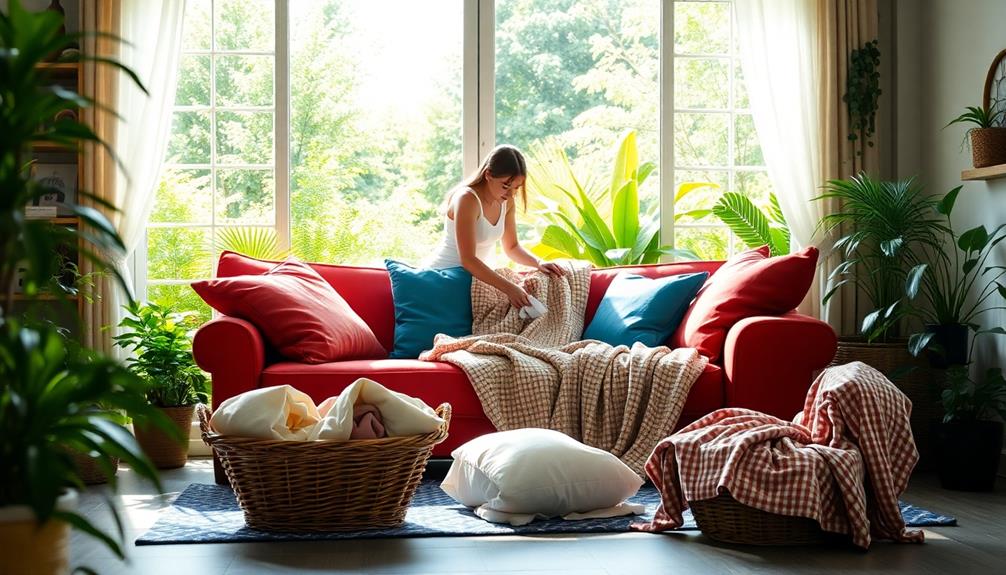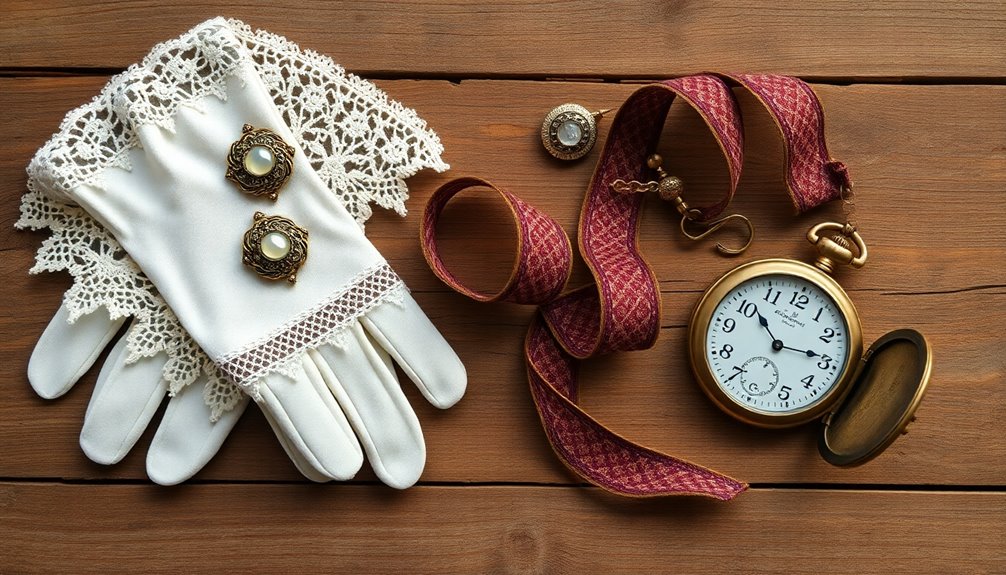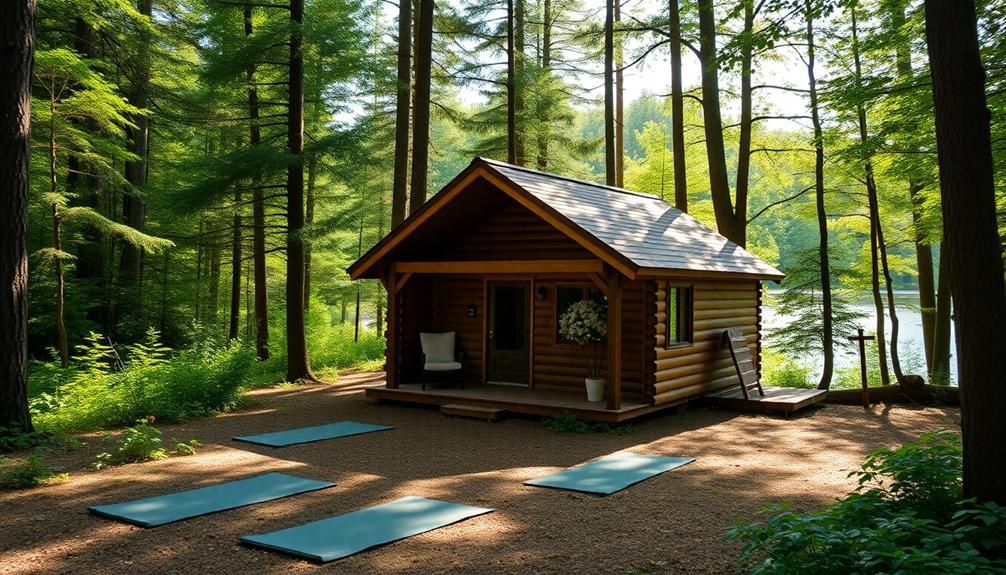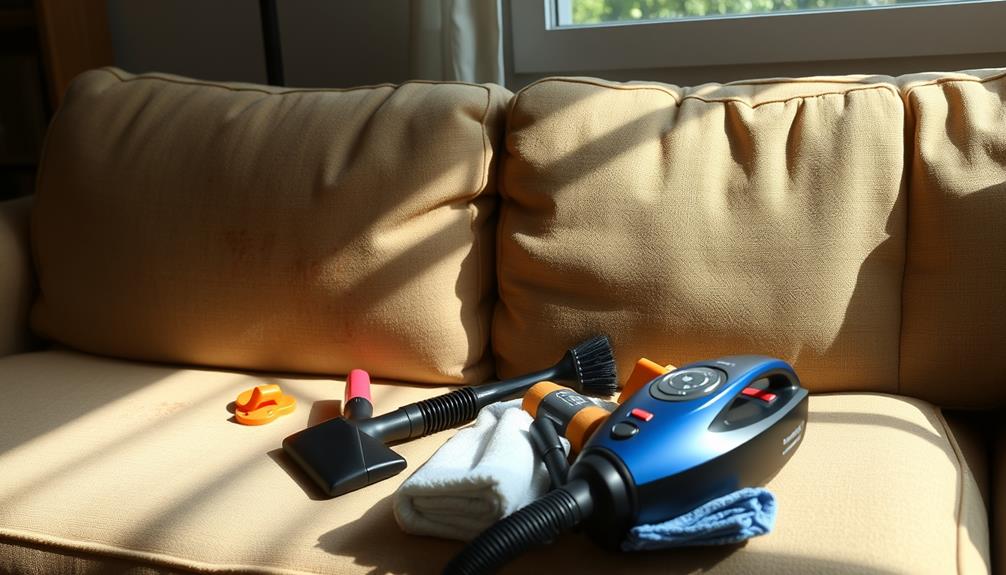To clean your sofa covers, commence by consulting the care labels for specific guidelines. Address any visible stains with a fabric-safe stain remover. Utilize a gentle, dye-free detergent and wash on a delicate cycle with cold water. If handwashing, immerse them in a tub with cold water and detergent, then rinse thoroughly. Always air dry your covers to prevent any shrinking. Remember to vacuum them before washing to remove dirt and allergens. By following these steps, you can keep your sofa covers looking great and extend their lifespan. Stay tuned for more helpful tips to ensure your cleaning routine is efficient!
Key Takeaways
- Always check care labels for specific washing instructions and fabric compatibility before cleaning your sofa covers.
- Pre-treat any visible stains with a fabric-safe stain remover to prevent them from setting in during the wash.
- Use a mild, dye-free detergent and wash on a delicate cycle with cold water to protect the fabric.
- Air dry your sofa covers instead of using a dryer to avoid shrinkage and maintain their shape.
- Regularly vacuum the covers and wash them monthly if you have pets or children to manage dirt and allergens.
Do's and Don'ts of Washing
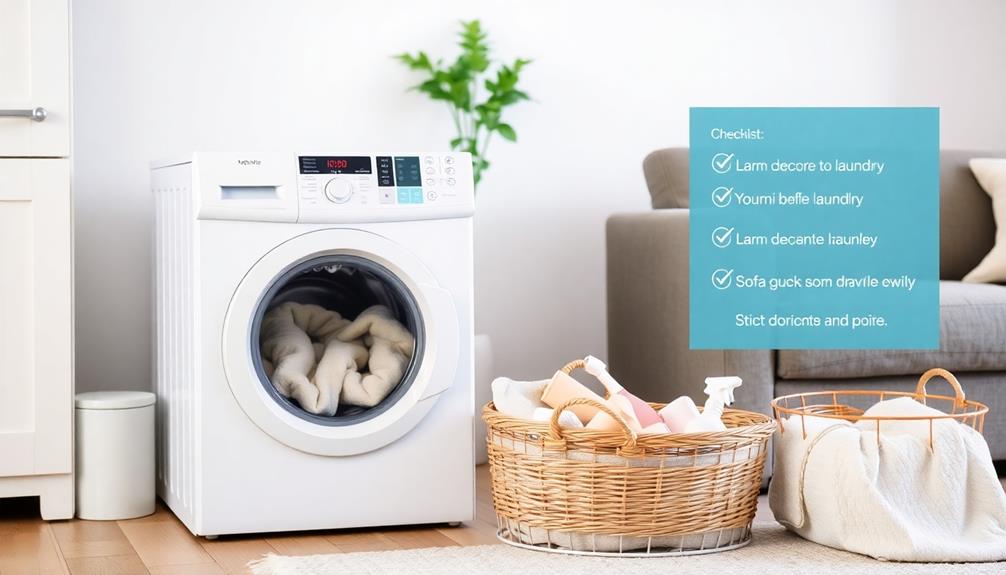
When it comes to washing sofa covers, there are essential do's and don'ts to keep in mind. First, always read the care label thoroughly before you wash your covers. This helps you understand the recommended methods and avoid damaging the fabric.
Next, do pre-treat stains with a fabric-safe remover. This'll prevent them from setting during the wash cycle. Additionally, consider using natural cleaning agents like essential oils for a fresher scent and added antimicrobial benefits, such as essential oils for respiratory health.
When it's time to wash, use a mild detergent instead of harsh chemicals or bleach. These can lead to discoloration and ruin your covers. Stick to cold water and a gentle cycle to maintain their shape and color.
Another important do is to wash covers of similar colors together; this'll help you avoid color bleeding.
On the flip side, don't overlook any small repairs before washing. Damaged areas can worsen during the cleaning process, leading to bigger problems.
Additionally, avoid mixing different fabric types in one load, as this can also cause damage. By following these do's and don'ts, you'll keep your sofa covers looking fresh and vibrant for years to come.
Best Practices for Washing
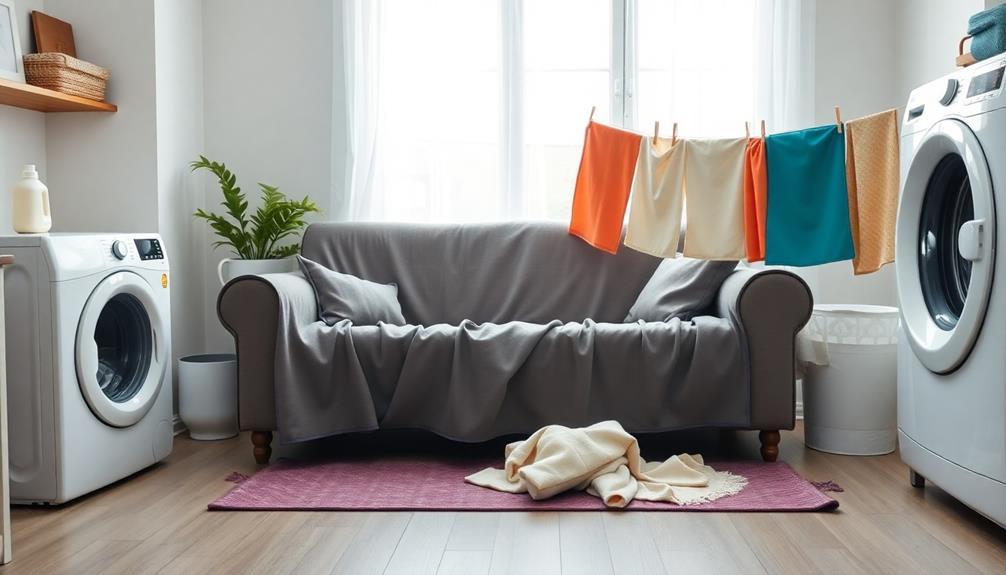
Washing your sofa covers effectively requires following best practices to guarantee they remain in great condition. Start by thoroughly reading the care label to understand the specific washing instructions, including the appropriate temperatures and detergent types for your machine washable covers.
Before washing, pre-treat any visible stains with a fabric-safe stain remover to prevent them from setting in. Additionally, consider the air quality in your home, as air purifier maintenance dos and don'ts can help reduce allergens that may settle on your sofa.
When you're ready to wash, use a mild, dye-free detergent. Strong detergents can lead to fabric damage and color fading, so it's best to stick with gentler options. Set your washing machine to a gentle cycle and use cold water to minimize risks of shrinking or fading during the washing process.
After washing, avoid the dryer; instead, air dry your sofa covers. High heat can cause shrinkage and alter the shape of your fabric, which you definitely want to avoid.
Importance of Care Instructions
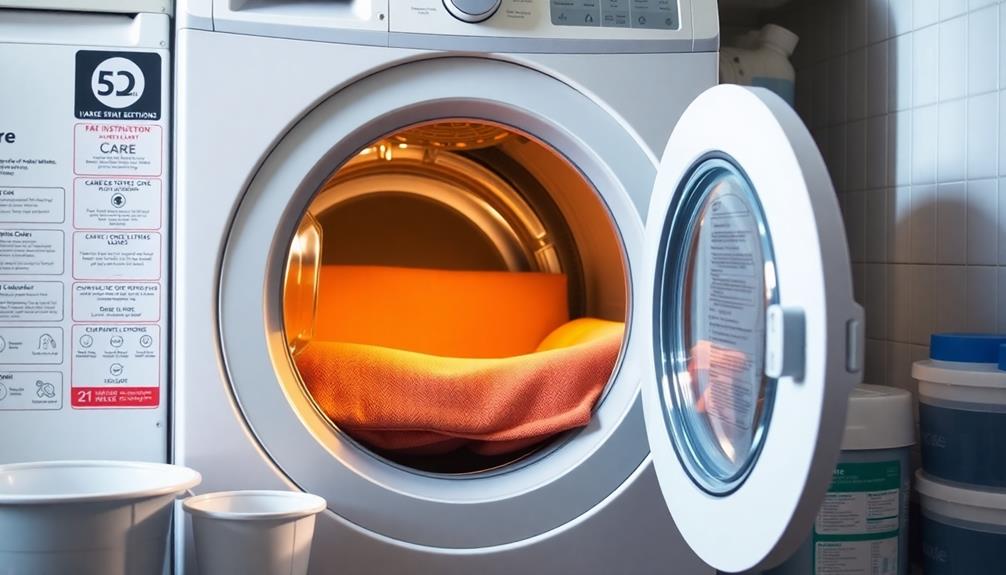
Care instructions on sofa cover labels are essential for maintaining the integrity of your upholstery. These guidelines are tailored to specific upholstery fabric types, making sure you avoid potential damage during washing. By following the care instructions, you greatly extend the lifespan of your sofa covers, enhancing their aesthetic appeal and maintaining their original quality.
Regular cleaning of fabric surfaces can help prevent the buildup of allergens and dirt, promoting a healthier living environment, much like how professional cleaning services guarantee ideal results for various surfaces.
Ignoring these labels can lead to serious issues like shrinkage, fading, or distortion of the fabric, which can compromise the appearance of your sofa. Effective cleaning relies on understanding these instructions. If you wash delicate materials improperly, you risk irreversible damage that could diminish their look and feel.
Regular maintenance, coupled with adherence to care instructions, not only keeps your sofa covers looking fresh but also improves hygiene by preventing the buildup of dirt and allergens in your living space.
Washing Techniques Overview
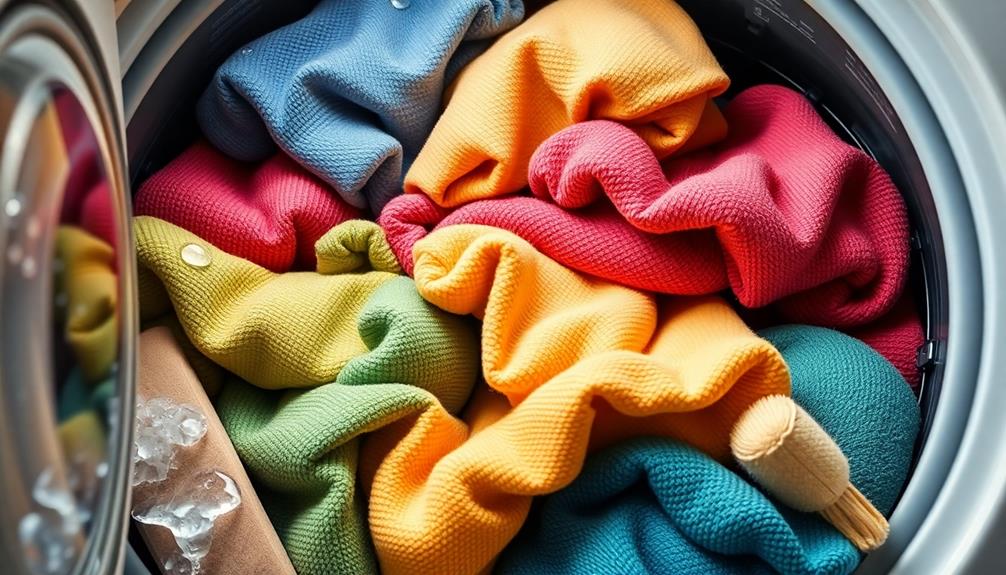
To keep your sofa covers looking their best, it's important to use the right washing techniques. Always check the care labels to determine the best way to wash sofa covers. For many fabrics, machine washing on a delicate cycle with cold water is ideal, as it helps prevent damage, shrinkage, and fading. This is especially true for delicate materials like velvet and polyester.
Additionally, using a best vacuum for dust removal prior to washing can help eliminate any embedded dirt and allergens, ensuring a deeper clean.
Before you start machine washing, use a vacuum cleaner to remove any loose dirt and pet hair. This will enhance the cleaning effectiveness. If you spot any visible stains, make sure to treat them with a fabric-safe stain remover before washing. This step is vital to prevent stains from setting during the cleaning process.
After washing, it's recommended to let your sofa covers air dry. This method helps maintain the shape and integrity of the fabric while avoiding the high heat settings in dryers that can cause shrinkage or damage.
Washing Machine Compatibility

How can you guarantee your sofa covers are safe in the washing machine? The key is to check the care labels before diving into the washing process. Not all sofa covers are machine washable, and using the wrong method can lead to damage. Here's how to ascertain compatibility:
1. Check Care Labels: Always look for information on whether your covers are machine washable. Non-machine-washable fabrics can shrink or discolor.
Additionally, be aware that improper care can lead to issues similar to infection risks and prevention in body piercings, so it's essential to follow guidelines.
2. Know the Fabric Type: Cotton and polyester covers can typically handle a wash at 40°C or lower. However, delicate fabrics like velvet require a gentle cycle to avoid fraying and maintain shape.
3. Use Removable Covers Wisely: When washing removable covers, turn them inside out. This simple step can help protect them during the washing process and reduce wear.
Hand Washing Methods
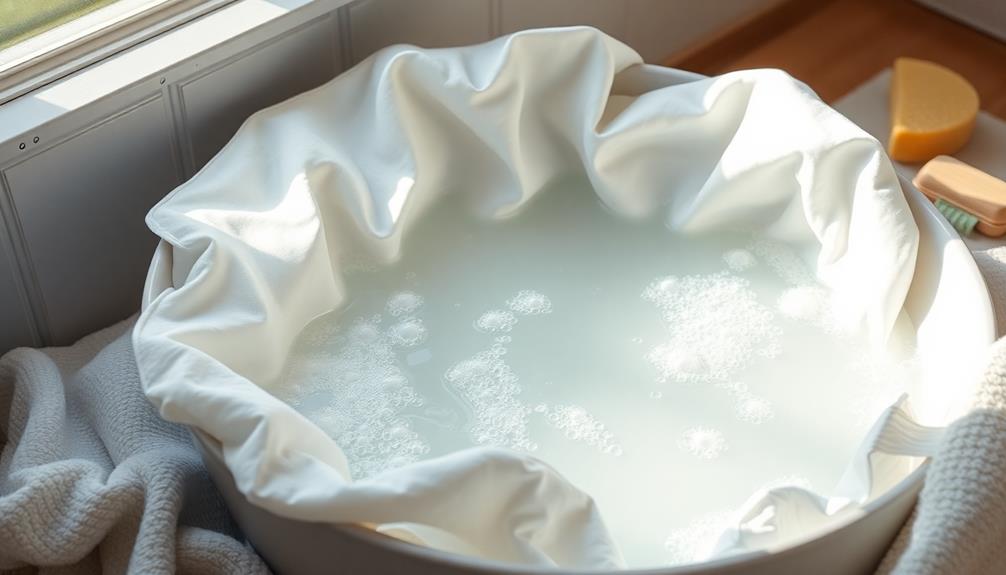
For those sofa covers that aren't suitable for the washing machine, hand washing offers a gentle and effective alternative. Start by vacuuming the covers to remove loose dirt and debris, enhancing the cleaning process and preventing dirt from spreading. If you notice any visible stains, pre-treat them with a fabric-safe stain remover or a solution of mild detergent and warm water.
Additionally, using a gentle cleaning approach can help maintain the integrity of various fabrics, much like how coffee preparation techniques focus on preserving flavor.
Next, prepare a basin filled with cool or lukewarm water mixed with a mild detergent. Soak the covers in this solution, gently agitating the water to help lift dirt without wringing or twisting the delicate fabrics. This gentle approach helps maintain fabric integrity, ensuring your sofa covers stay in great condition.
After you've soaked the covers, it's important to rinse thoroughly in cold water to remove all detergent residue. Once rinsed, air dry the covers by laying them flat or hanging them up. Avoid direct sunlight during this drying process, as it can lead to fading and shrinkage.
Hand washing may take a little extra time, but it's worth it for preserving the beauty and longevity of your sofa covers.
Maintenance Frequency Guidelines
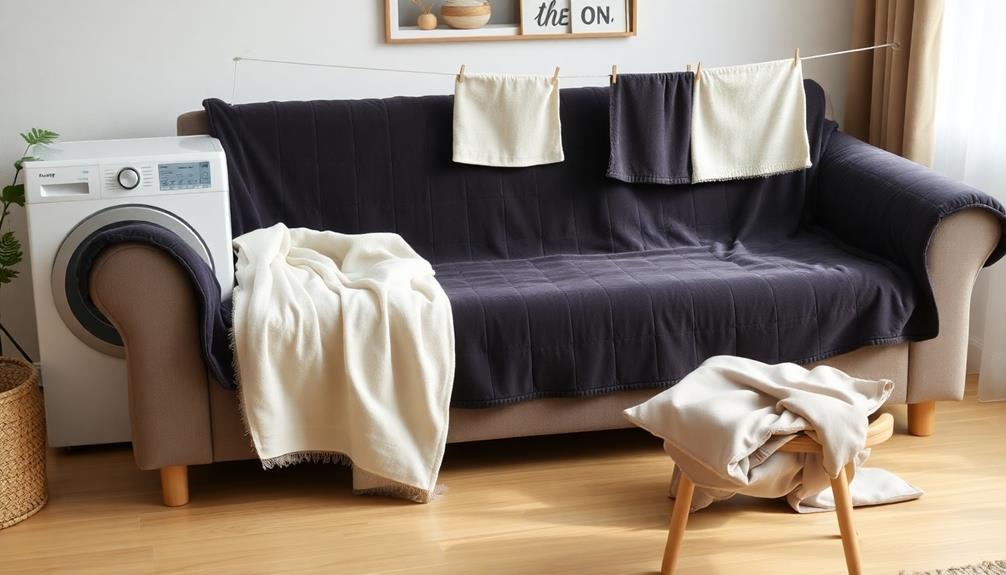
To keep your sofa covers looking fresh, aim to wash them every 2-3 months, but don't hesitate to increase that frequency if you have kids or pets.
Incorporating regular maintenance practices, such as budgeting for cleaning supplies, like detergents and fabric refreshers, can also help.
Regular maintenance, like weekly vacuuming and quick spot treatments, can greatly extend the time between deep cleans.
Recommended Washing Frequency
Wondering how often you should wash your sofa covers? The recommended washing frequency is every 2-3 months for most households.
However, if you have pets, children, or experience high levels of cooking smoke, you might need to wash them monthly. Regular cleaning can help reduce allergens and improve your indoor air quality, which is especially important if you're dealing with issues like common types of cold medications that can affect your health.
Here's a quick guide to help you determine the best schedule:
- Monthly: If you have pets or children, wash your covers every month to tackle extra dirt and stains.
- Every 2-3 Months: For typical use without heavy exposure to messes, this frequency should suffice.
- Weekly Vacuuming: Don't forget to vacuum your sofa covers weekly to prevent dirt buildup, extending the time between full washes.
Promptly treating stains is essential to prevent them from setting and becoming permanent. Use a gentle cleaner or water to address spills immediately.
Importance of Regular Maintenance
Maintaining your sofa covers is essential for both hygiene and aesthetics. Regular maintenance not only keeps your living space looking fresh but also prolongs the life of the fabric.
Incorporating a routine similar to yoga for back pain can help relieve stress and create a more inviting environment. Aim to wash your cushion covers every 2-3 months; however, if you have pets or kids, consider washing them monthly to combat dirt and allergens.
Incorporate weekly vacuuming into your routine to prevent dirt buildup. This simple step can greatly help maintain the appearance of your sofa and keep it inviting for guests.
When faced with accidental spills, act promptly. Using the right cleaning method can make all the difference in preventing stubborn stains from setting in.
Precautions for Washing
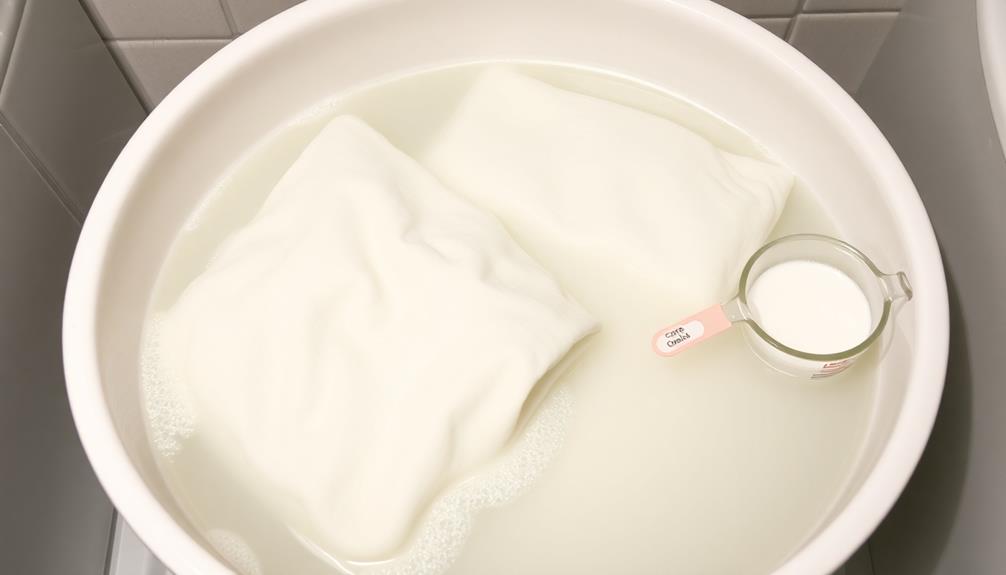
Before washing your sofa covers, you should always check the care labels for specific washing instructions. These labels will provide guidance on the appropriate water temperature, cycle settings, and any specific detergents to use. In addition to the covers, it’s important to know how to clean sofa pillows as they can collect dust and debris over time. Depending on the fabric, some pillows may be machine washable, while others require spot cleaning or professional care. If you’re unsure **how to clean sofa pillows**, it’s best to consult their care labels as well to avoid damage. Regular maintenance, such as vacuuming or gentle brushing, can help keep both the covers and pillows fresh in between washes. By following the recommended care instructions, you can extend the lifespan of your sofa and maintain its appearance for years to come.
This attention to detail is essential, as similar to how individuals with BPD may have unique emotional needs, different fabric types may require varying washing methods.
Make certain to inspect the covers for any small rips or loose threads, as this can help prevent further damage during the wash.
Taking these precautions will guarantee your covers stay in great condition.
Check Care Labels
When tackling the task of washing your sofa covers, always start by checking the care labels.
These labels provide essential instructions that guide you in maintaining the integrity and appearance of your covers. Ignoring this vital step can lead to irreversible damage, especially with delicate fabrics like silk and wool.
Here are three key points to keep in mind while checking care labels:
- Washing Methods: Verify whether your covers are machine washable or if they require hand washing. Follow the recommended temperatures to avoid shrinkage or fraying.
- Detergent Guidelines: Some materials may react poorly to certain detergents, including bleach and fabric softeners. Always confirm you're using the right detergent for your fabric type.
- Dry Cleaning: While dry cleaning may be suitable for some fabrics, it can adversely affect others. Always check the care label before opting for this method to prevent damage.
Inspect for Damage
A thorough inspection of your sofa covers is essential to confirm they withstand the washing process without incurring further damage. Start by looking for small rips and loose threads. These issues can worsen during washing, leading to bigger problems. If you find any, make necessary repairs like sewing up small tears before you proceed.
Next, check for pet hair or debris. Vacuuming these off confirms a thorough clean. Don't forget to note any stains that might need pre-treatment; otherwise, they could set in during washing. Always refer to the care label for specific washing instructions, as different fabrics require different handling.
Here's a quick guide to help you inspect:
| Inspection Area | What to Look For | Action Needed |
|---|---|---|
| Fabric | Small rips | Repair before washing |
| Threads | Loose threads | Secure or trim |
| Stains | Visible stains | Pre-treat before washing |
| Debris | Pet hair or dirt | Vacuum thoroughly |
| Care Label | Specific washing instructions | Follow closely |
Additional Resources and Products

For those looking to enhance their sofa cover experience, a wealth of additional resources and products is available. You can find a variety of sofa covers, like the popular Magic Sofa Cover – Classic, which starts at $16.99 and boasts a 4.8-star rating.
To keep your covers in good shape, consider these essential resources:
- Comparison Guides: Check out articles that compare sofa slipcovers versus reupholstering to decide what's best for your needs.
- Pet-Friendly Options: Explore recommendations for the best couch covers specifically designed to protect against pet damage, guaranteeing your furniture stays pristine.
- Measurement Tips: Learn how to measure your couch accurately to ensure you buy the right size cover and avoid any fitting issues.
Additionally, look for maintenance guides that provide insights into washing your cover and using an upholstery cleaner.
These resources will make it easy to clean your covers and maximize their lifespan. With proper care, your sofa covers can't only look great but also withstand everyday wear and tear.
Community Engagement Opportunities

Engaging with others in the cleaning community can greatly enhance your sofa cover care experience. By participating in comment sections, you can share your cleaning experiences and seek advice, enriching the collective knowledge about washing sofa covers. This kind of community engagement fosters a supportive environment where everyone can benefit from shared cleaning tips.
Following social media platforms like Facebook and Twitter keeps you updated on the latest maintenance tips and special deals. You'll find a wealth of resources, including personal cleaning hacks that others have tried and tested.
Subscribing to newsletters is another excellent way to access exclusive content and community stories related to fabric care.
Don't hesitate to leave feedback about your cleaning successes or challenges. Your input creates a valuable dialogue around best practices for sofa cover maintenance. Engaging with others in these discussions helps you learn what works best for different fabric types and cleaning methods.
The more you interact with the community, the better equipped you'll be to tackle any cleaning task. Embrace these community engagement opportunities, and you'll elevate your sofa cover care to a whole new level.
Frequently Asked Questions
Can I Put My Couch Covers in the Washing Machine?
You can put your couch covers in the washing machine, but first, check the care label. If they're machine washable, use a gentle cycle with cold water and avoid mixing colors to prevent bleeding.
Are Sofa Covers Machine Washable?
Imagine a canvas, vibrant yet vulnerable. Not all sofa covers are machine washable. Check the care label carefully; cotton and polyester usually are, but delicate fabrics might need gentle handling to preserve their beauty.
Should I Wash Couch Covers Inside Out?
Yes, you should wash couch covers inside out. It protects the fabric, reduces color bleeding, and keeps patterns vibrant. Always check care labels to guarantee it's suitable for your specific fabric type.
How to Wash Sofa Covers That Don't Come Off?
To clean non-removable sofa covers, vacuum regularly, spot clean stains immediately, and use a steam cleaner on low. You might also consider professional cleaning services for deep cleaning and maintaining your sofa's appearance.
Conclusion
In the end, keeping your sofa covers fresh and clean is easier than you think. By following the do's and don'ts, respecting care instructions, and knowing your washing machine's limits, you can guarantee your living space feels like home. Remember, your couch is where you create memories, just like your granddad used to tell stories on his favorite armchair. So, take a moment to care for it, and it'll serve you well for years to come.
